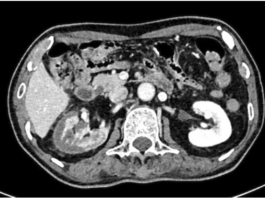Morgellons disease started as a novelty, thousands of people claimed that they have a strange illness and hardly anyone believed them. And the numbers were growing. The illness manifests in many ways including fatigue, pain and a sensation of insects crawling over your skin. Nobody knew what this condition was or where it came from. But, they all knew it was real.
The diagnosis of the disease originated in 2001, when Mary Leitao took her toddler son to the doctor because he had sores on his lips that weren’t going away. Her son complained of bugs under his skin. The doctor was completely baffled and clueless about what her son was suffering from. Eventually, the doctor told her something she didn’t want to hear that by proxy he was suffering from Münchausen syndrome. The syndrome causes a parent or caregiver to fabricate and sometimes induce an illness on a dependant.
Leitao, however, did not conform with the diagnosis and Morgellons was discovered as she came up with her own diagnosis.
What is Moregellons disease?
Morgellons disease is a rare disorder in which patients experience a sensation of crawling, biting and stinging on their skin. The disorder is characterized by the presence of fibres underneath and erupting from unbroken skin or slow healing sores.
The symptoms can be very painful and interfere with the quality of your life and daily activities. According to a study (Savely & Stricker, 2010) white, middle-aged women are more susceptible to the disease. Whereas, people with Lyme disease, exposed to a tick and hypothyroidism are at a higher risk for Morgellons.
Patients started bringing these fibres, fuzz, flecks and threads to their doctors, stored in matchboxes and Tupperware
Dermatologists started calling it “the matchbox sign” and claimed that the patients had become so determined to prove that the disease existed that they were willing to produce fake evidence even.
In January 2012, the CDC finally released its study, “Clinical, Epidemiologic, Histopathologic and Molecular Features of an Unexplained Dermopathy”, proving that Morgellons is not just a delusion but an actual disease.
Bottom line: the study offered Moregellons sufferers refuge that the disease was not all in their head!
References
Pearson, M. L., Selby, J. V., Katz, K. A., Cantrell, V., Braden, C. R., Parise, M. E., … & Hightower, A. W. (2012). Clinical, epidemiologic, histopathologic and molecular features of an unexplained dermopathy. PLoS One, 7(1).
Savely, V. R., & Stricker, R. B. (2010). Morgellons disease: analysis of a population with clinically confirmed microscopic subcutaneous fibers of unknown etiology. Clinical, cosmetic and investigational dermatology: CCID, 3, 67.



